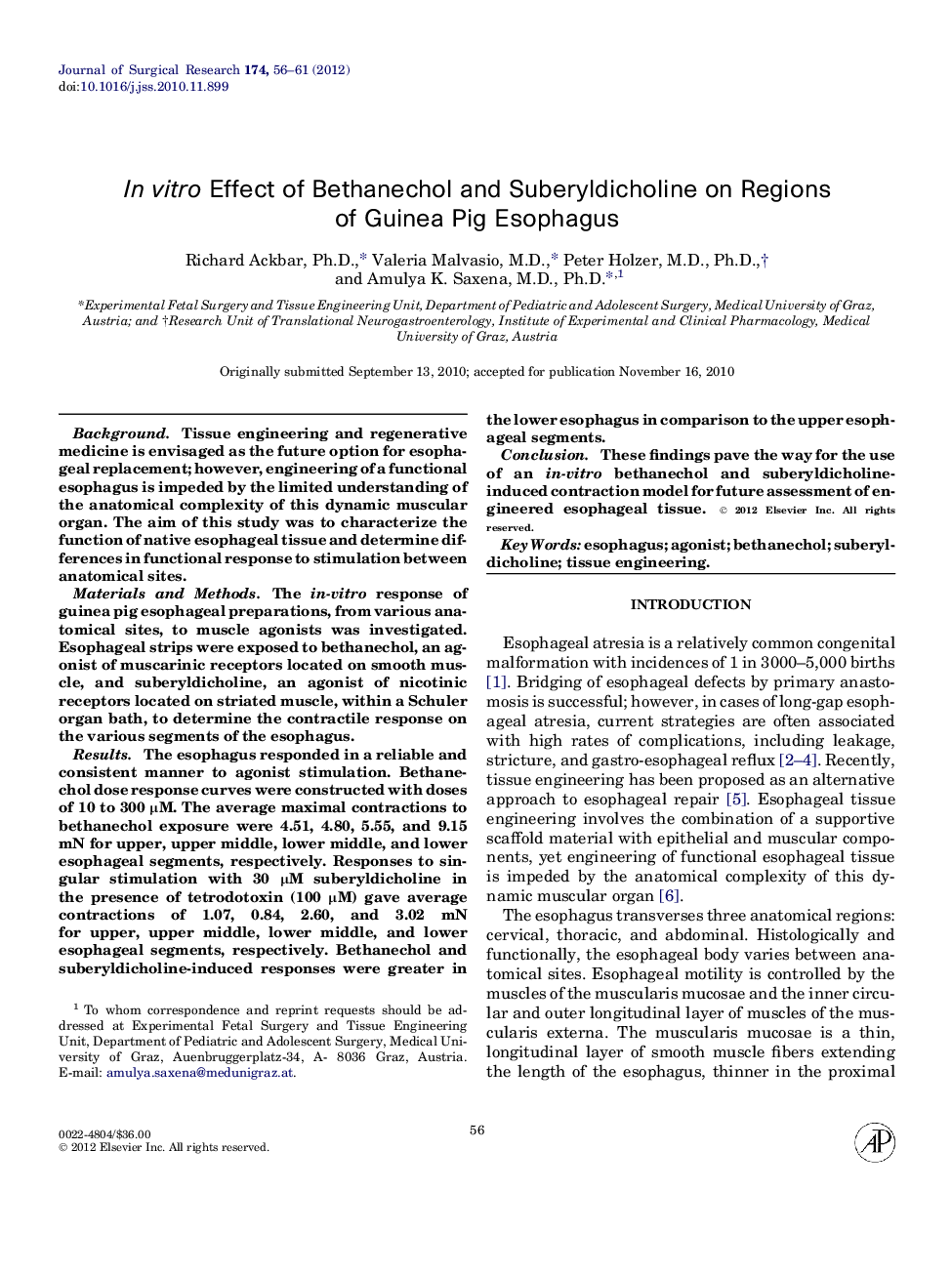| Article ID | Journal | Published Year | Pages | File Type |
|---|---|---|---|---|
| 4301781 | Journal of Surgical Research | 2012 | 6 Pages |
BackgroundTissue engineering and regenerative medicine is envisaged as the future option for esophageal replacement; however, engineering of a functional esophagus is impeded by the limited understanding of the anatomical complexity of this dynamic muscular organ. The aim of this study was to characterize the function of native esophageal tissue and determine differences in functional response to stimulation between anatomical sites.Materials and MethodsThe in-vitro response of guinea pig esophageal preparations, from various anatomical sites, to muscle agonists was investigated. Esophageal strips were exposed to bethanechol, an agonist of muscarinic receptors located on smooth muscle, and suberyldicholine, an agonist of nicotinic receptors located on striated muscle, within a Schuler organ bath, to determine the contractile response on the various segments of the esophagus.ResultsThe esophagus responded in a reliable and consistent manner to agonist stimulation. Bethanechol dose response curves were constructed with doses of 10 to 300 μM. The average maximal contractions to bethanechol exposure were 4.51, 4.80, 5.55, and 9.15 mN for upper, upper middle, lower middle, and lower esophageal segments, respectively. Responses to singular stimulation with 30 μM suberyldicholine in the presence of tetrodotoxin (100 μM) gave average contractions of 1.07, 0.84, 2.60, and 3.02 mN for upper, upper middle, lower middle, and lower esophageal segments, respectively. Bethanechol and suberyldicholine-induced responses were greater in the lower esophagus in comparison to the upper esophageal segments.ConclusionThese findings pave the way for the use of an in-vitro bethanechol and suberyldicholine-induced contraction model for future assessment of engineered esophageal tissue.
